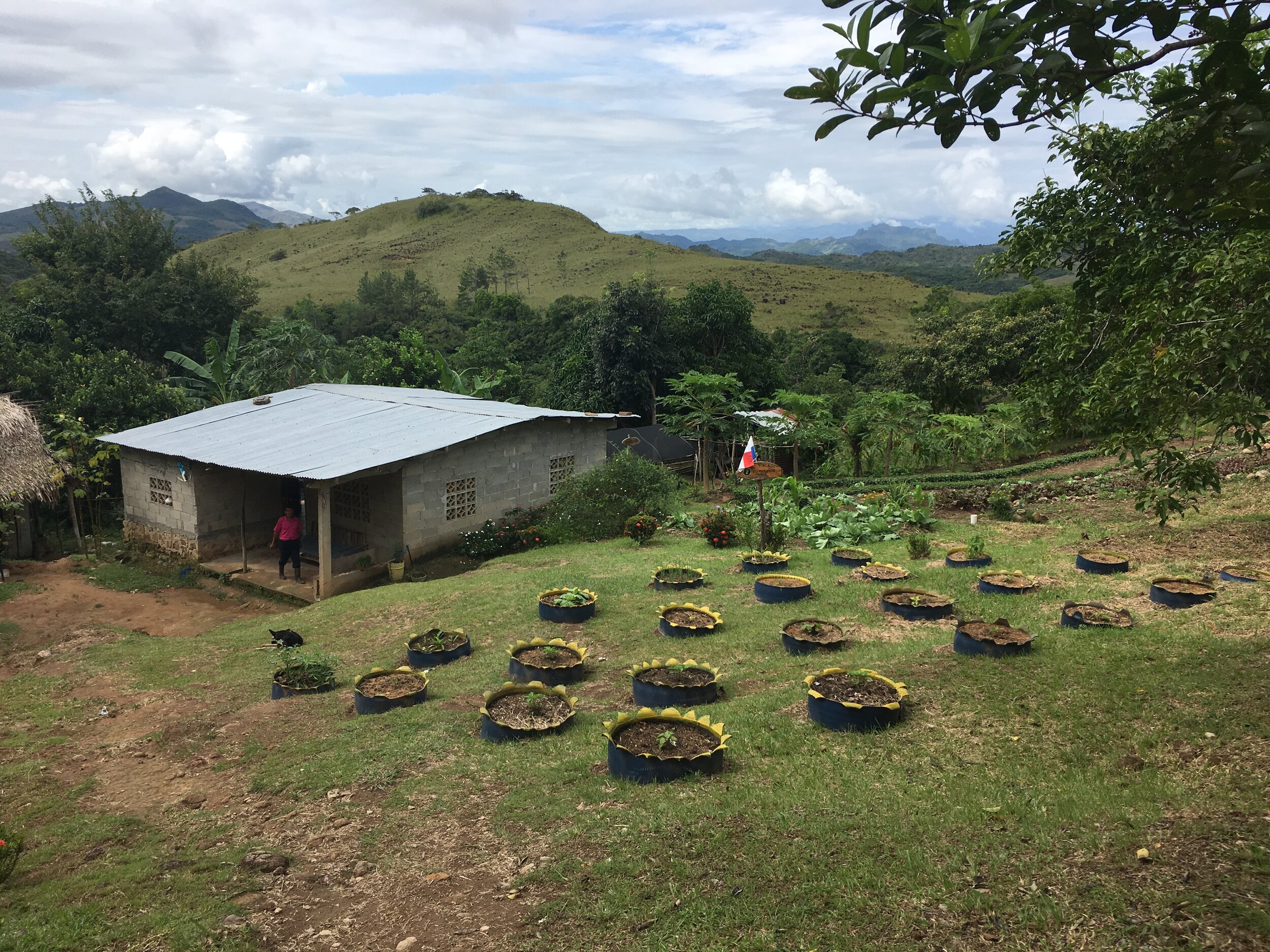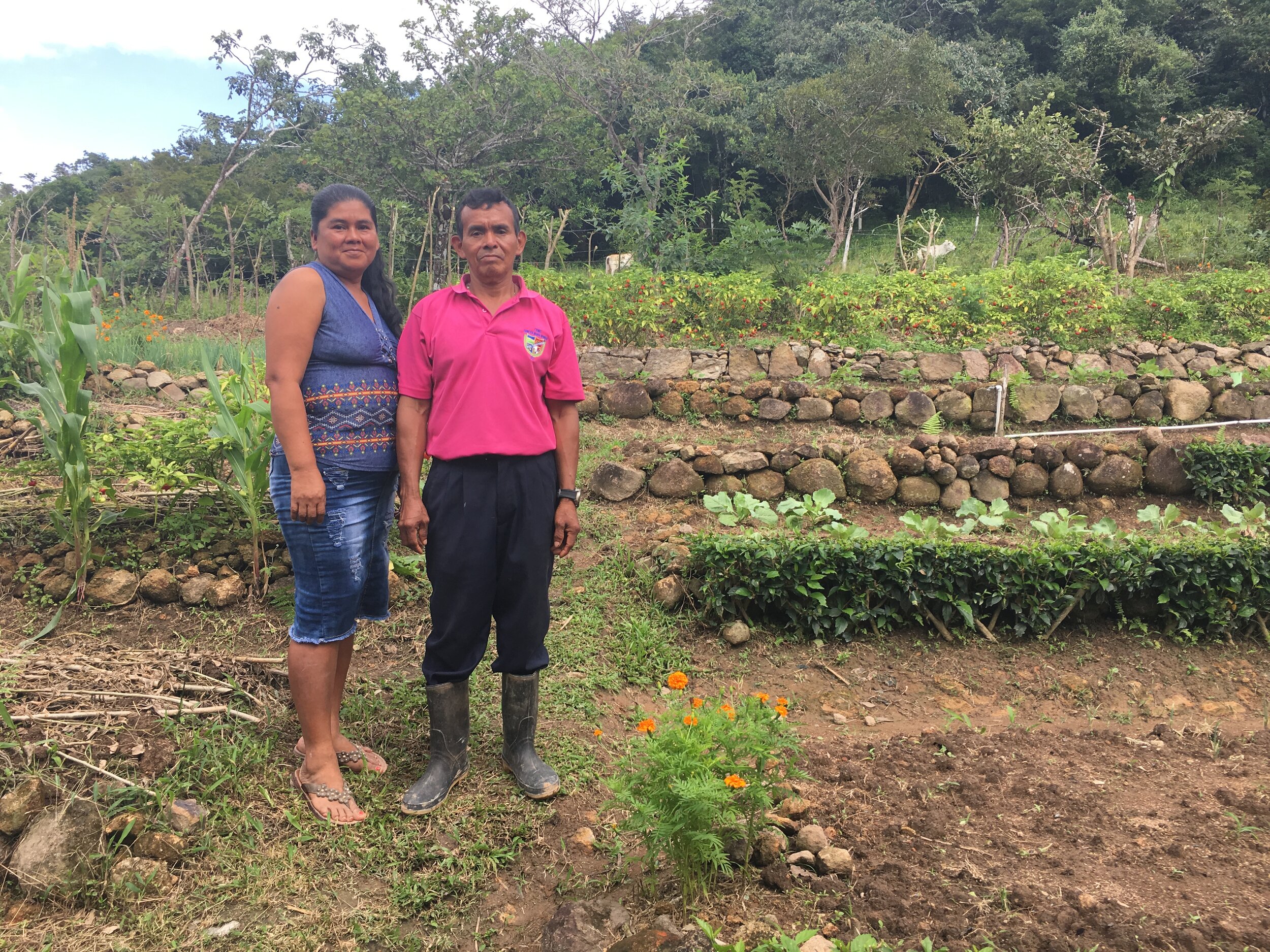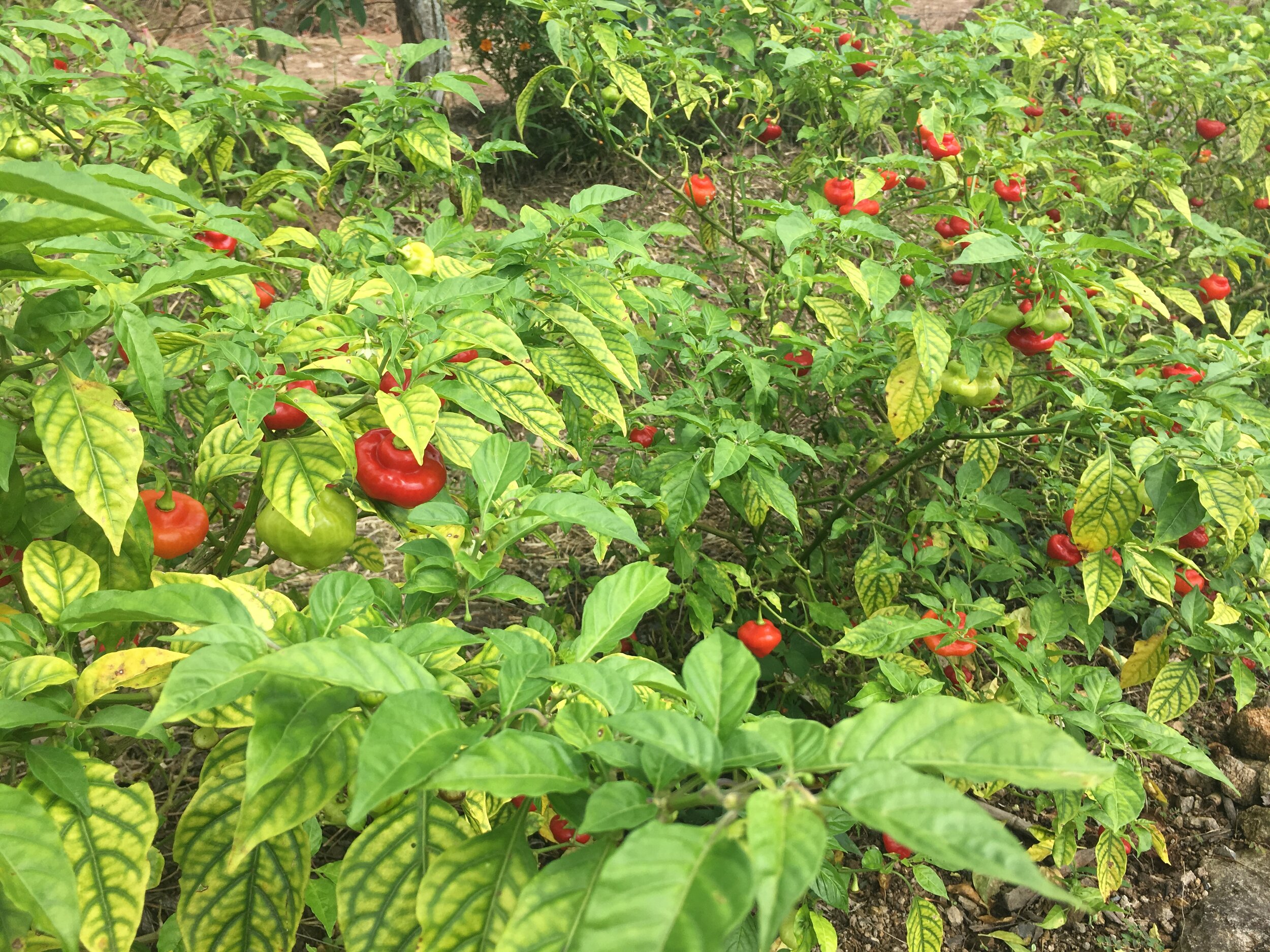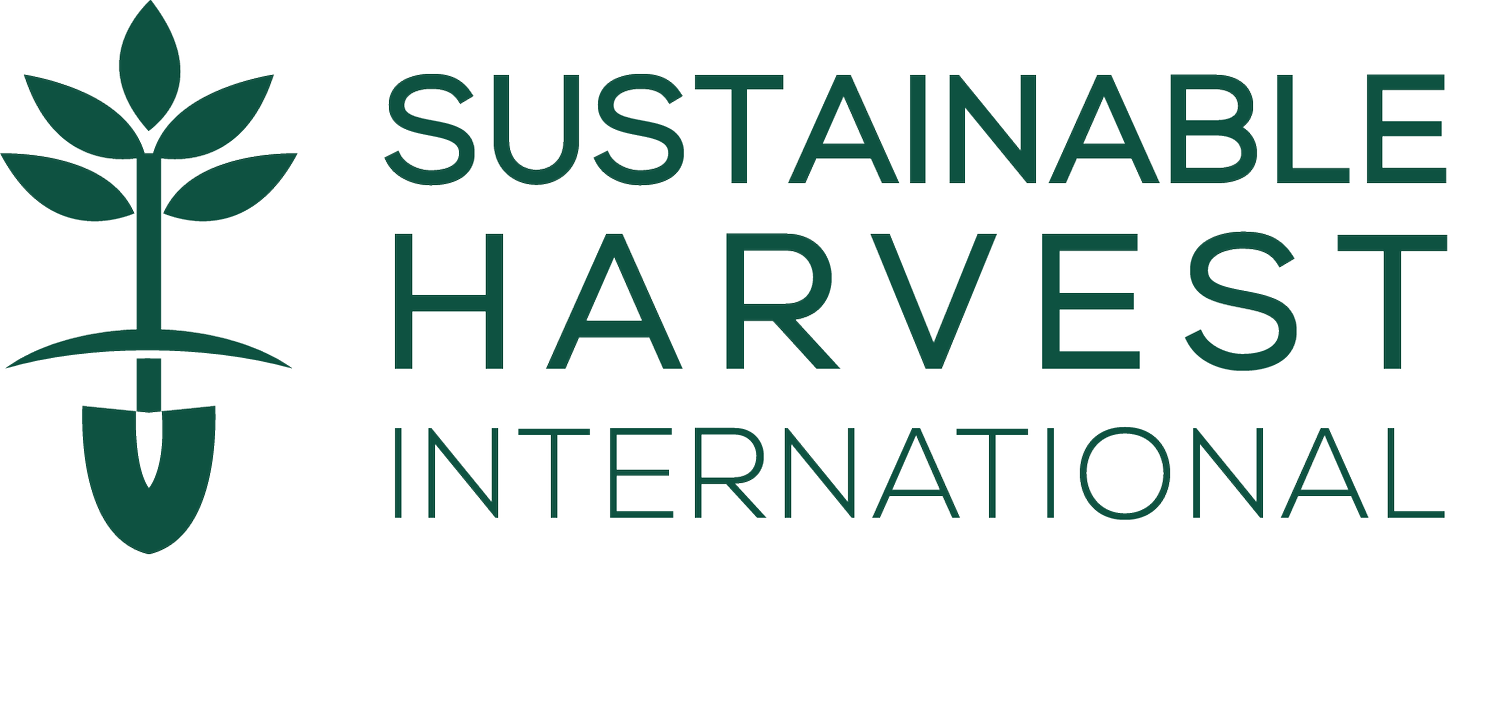Florence Reed has championed regenerative agriculture for decades. After serving as a Peace Corps Volunteer in Panama, she founded Sustainable Harvest International in 1997 in order to address the intertwined issues of food insecurity, rural poverty, and environmental degradation. Today, she serves as SHI’s Founder + Director of Strategic Growth and spends much of her time working towards scaling up SHI’s impact. In this blog post, she discusses how Covid-19 laid bare the insecurity of our global food systems and why it’s imperative that we assist smallholders worldwide in adopting the regenerative agriculture practices that will save the planet and secure farmers’ food sovereignty.
In his prize-winning 1985 novel, Love in the Time of Cholera, Gabriel Garcia Marquez (AKA Gabo) wrote "No, not rich. I am a poor man with money, which is not the same thing.” Our global food system’s focus on money is leaving humanity with poor nutrition, poor water and air quality, poor soils, poor human relations and a climate poorly suited to our survival. Situations made all the more apparent by the current pandemic.
And more importantly, the coronavirus drives home the benefits of a different kind of food system. Prioritizing people’s right relationships with each other and the rest of the natural world could produce a rich climate with an abundance of healthy land, air, water and food for all of earth’s creatures including us.
Speaking of coronavirus and social distancing, whatever you think of this blog post, I hope you’ll at least appreciate it’s not focused on Gabo’s most famous book that might feel too well-suited to these times: One Hundred Years of Solitude. Instead, I’ll start by considering some harsh realities mixed so seamlessly with the magical in his writing.
Our current food system is a complex web of global supply chains.
Source: ShiftN, “The Global Food System,” FoodTechConnect, Version 1.2 March, 2009, Accessed May 26, 2020, https://foodtechconnect.com/wp-content/uploads/2010/07/food-system-map4.jpg.
A SYSTEM THAT SICKENS, SUPPRESSES, AND EXPLOITS
Hunger has been on the rise again since 2015, with the majority of food insecure people living in rural areas. Doesn’t it seem very wrong not only that there’s still hunger in our world, but also that most of the world’s hungry are in farming communities?
Most farmers borrow money to buy foreign machinery and chemical inputs that suppress nature and warm the climate. The farmers grow a small number of nutritionally poor crops to sell for money to buy food. That’s if they’re lucky. In many cases, the crops fall prey to pests, disease, drought or flooding, or there’s not a good market for the crop come harvest time, and the farmer is left with no money for food or paying off debts. So, it should come as no surprise that hunger is most often tied to declining commodity prices and increasing food prices. According to hunger organization Bread for the World, poverty is the major cause of hunger and ¾ of people living in extreme poverty live in rural communities.
The coronavirus pandemic exacerbates all of these problems, making it even harder for farmers to access credit, buy inputs, market their crops or purchase food, as transportation and manufacturing are restricted or even shut down. So what do we say in the face of a system that sickens consumers, suppresses nature and exploits workers?
LET’S RESPOND WITH LIFE
Gabo said, “to oppression…we respond with life.” And what’s more, “Life is the best thing that has ever been invented.”
“I founded Sustainable Harvest International 23 years ago to help smallholder farmers make this transition to agriculture based on the life inherent in nature rather than death by fire or chemicals. ”
At Sustainable Harvest International we fully believe in this philosophy, and for 23 years we’ve helped farmers embrace life, or in other words, nature, to produce an abundance of healthy food on farms that promote biodiversity instead of killing all but 2 or 3 desired species. Over the years, we’ve found that healthy ecosystems both above the ground and in the soil produce an abundance of crops without costly external inputs.
Regenerative agriculture is a term now commonly used to describe this type of farming that embraces and enhances the life found in natural ecosystems by minimizing soil disturbance, maximizing crop diversity, keeping the soil covered, maintaining living roots year-round and often integrating livestock.
Sustainable Harvest International spreads regenerative agroecology practices by hiring local field trainers, each of whom works with a cohort of smallholder farmers and their families, visiting them every week or two for several years sharing new practices that build on each other and on the farmers’ existing knowledge.
REGENERATING ABUNDANCE AMIDST SCARCITY
Alberto Rivera and his wife, Felicia Navas, are one couple who’ve been in the SHI program since 2016. When I visited them in early 2017 and again in late 2018, they were already growing a diverse abundance of food on terraced garden beds held in place with stone walls and live barriers.



Soil improved with compost and other organic matter was nourishing healthy, productive pepper plants, tomatoes and other vegetables on the terraces. Below the terraces, papaya trees, celery and corn grew alongside each other in more enriched soil, as well as grenadine vines whose fruit hung from a handmade trellis. To add more protein to their diet, Alberto and Felicia planted their first soybeans in soil enriched with composted chicken manure and rice hulls, then mulched with leaves and prunings from the balo (gliricidia sepium) trees used as live fenceposts. Above the house, planters made from discarded tires protected more tomatoes, while pineapples and other crops grew on more terraces. The barren hillside in the distance is typical of land in this area, and that particular hill belongs to Felicia’s father who they hope will let them plant trees and other crops on it in an agroforestry plantation.
In this short video, Felicia explains how they tried for years but weren’t able to get anything to grow on their land until SHI showed them how to improve the soil with organic matter.
Since my last visit in 2018, Alberto, Felicia and their children have continued to increase their harvests by improving the soil. The photos in the above slideshow were taken during that visit.
Photo sent by Alberto Rivera and Felicia Navas’ son in April 2020.
And, even in the time of coronavirus, when many more people are having a hard time finding food, Alberto and Felicia’s son sent the photo at the left to show us that they’re continuing with the new techniques they’ve learned and that they’re thriving.
I find it appropriate that we received this photo on Earth Day, since they’re taking the pressure of agricultural expansion off nearby forests by using practices that allow them to grow an abundance of crops in a small area rather than having to repeatedly clear more large areas of forest to take the place of land degraded by chemicals, burning, erosion and compaction. This preserves the natural biodiversity of those forests and allows them to continue acting as a carbon sink.
CARBON DRAWDOWN
Carbon is being drawn down out of the atmosphere into the trees and other permanent plants on Alberto and Felicia’s land, as well as into the organic material they are adding to the soil. The 2015 Status of the World’s Soil Resources report highlights that more carbon resides in soil than in the atmosphere and all plant life combined. However, in March 2017, the FAO reported that roughly 33% of the world’s soils are degraded, which has led to large losses of soil organic carbon. Soils from various global agro ecosystems such as croplands and grazing lands have lost 25–75% of their original soil organic carbon, depending on climate, soil type, and historic management. The FAO report goes on to say that these losses provide an opportunity to return an estimated 21 to 51 billion tons of carbon to the world’s agricultural and degraded soils, removing it from the atmosphere.
Source: Valerie Martin, ©2020 TERC. Used with permission.
And that’s not to mention the opportunity provided by trees being planted in agroforestry systems as part of this integrated approach to farming. "The global tree restoration potential” report published in Science in July 2019 shows that the restoration of forested land at a global scale could increase the world’s forested area by 25% capturing 200 billion tons of atmospheric carbon at maturity. Tom Crowther, a senior author of the report says that while it doesn’t alter the vital importance of protecting existing forests and phasing out fossil fuels since new forests would take decades to mature, “If we act now, this could cut carbon dioxide in the atmosphere by up to 25 percent, to levels last seen almost a century ago.”
“Farmers like Cirilo, Alberto and Felicia are infinitely more resilient to crises like Covid-19, growing everything for a rich life. And their farms enrich life on this planet for all of us by increasing rather than decreasing biodiversity and decreasing rather than increasing greenhouse gasses in the atmosphere.”
SMALLHOLDER FARMERS LEADING CLIMATE STABILIZATION
It’s this critical imperative to act now that’s led SHI to join Regeneration International, the Regenerative Agriculture Alliance, the 4 per 1000 initiative and many other groups working to stabilize the climate with regenerative farming.
Large scale farms are and must be part of this movement, but it’s going to take a lot more incentive for those that have millions of dollars invested in the old way of doing things to switch to this ecologically based approach.
I believe the low-hanging fruit of climate stabilization is helping smallholder farmers in the Global South who have so little to lose and so much to gain by making this transition.
All over the world smallholder farmers are embracing this opportunity when given the chance. I founded Sustainable Harvest International 23 years ago to help smallholder farmers make this transition to agriculture based on the life inherent in nature rather than death by fire or chemicals. Over the years, as Gabo says in Love in the Time of Cholera, “I discovered to my joy, that it is life, not death that has no limits.”
SHI farmer Sandra Meza from the community of Santa Cruz del Dulce in Siguatepeque, Honduras has been working with SHI field trainer Consuelo Hernandez since 2016.
SHI farmers continue to find an abundance of life in the time of Covid-19, as Cirilo shares so well in this homemade video he sent us. Farmers like Cirilo, Alberto and Felicia are infinitely more resilient to crises like Covid-19, growing everything for a rich life. And their farms enrich life on this planet for all of us by increasing rather than decreasing biodiversity and decreasing rather than increasing greenhouse gasses in the atmosphere.
SCALING UP
Cirilo, Alberto and Felicia are two of more than 3,000 SHI families who’ve transformed 30,000 acres of degraded land to regenerative, organic farms, planting more than 4 million trees over the last 23 years.
They’ve done this mostly so their families can eat better and have more money to cover other basics like education, better housing and healthcare. But we can all celebrate that they’re also increasing biodiversity and drawing down 48,000 tons of carbon out of the atmosphere every year. This matters to all of us but is a drop in the bucket compared to the challenges faced by humanity.
My greatest hope is that this drop in the bucket along with others can ripple out across the globe to create the level of change we need. For our part, SHI set a scaling up vision to help a million farms transition to regenerative organic practices by 2030 in line with UN Sustainable Development Goals. We’ll continue to work with some farmers directly, and we’ll partner with other organizations, businesses and government agencies to reach even more farmers.
In this way, we plan to help lead the way to a paradigm shift for the 500 million small-scale farms that produce most of the world’s food with almost no resources. If we help those 500 million farms become regenerative, they’ll draw down six billion tons of carbon from the atmosphere into the soil every year, which is equivalent to closing every coal-fired plant on earth.[1] This also happens to be the goal of the 4 per 1000 initiative. Three billion acres of biodiversity-rich habitat will be created on their farms too. That’s thirty times bigger than all the national parks in the United States combined![2] As an added bonus, these farmers will also provide more nutrient-dense, poison-free food for all of us. The world’s 500 million small-scale farmers are ready to do their part, but they can only do so with support to get started. Now I imagine you’re wondering what it will cost for 500 million farmers to shift to regenerative, organic agriculture. Well, we’ve been wondering the same thing.
Source: Mike Keefe, “Farm Bill 2008,” The Denver Post, May 17, 2008, Accessed May 28, 2020, https://www.intoon.com/cartoons.cfm/id/53539
As we move towards our scaling up goal, we’ll test changes to our methodology such as moving from a 5-year program to a 3-year program, employing farmer mentors to help each professional agronomist support many more farmers and finding a way for the farmers to pay for at least half the cost of the technical assistance they receive, maybe by selling crops to a business that generates income to offset the training costs.
Together, these or other changes could cut the net cost by almost 90% to $250 per farm per year for three years. At this price point, it would cost $30 billion per year for 12 years to reach all 500 million smallholder farms. You may think that $30 billion per year still sounds like a lot.
But not so much, considering that governments of the world provide $600 billion a year or more in subsidies to industrial agriculture, GMOs, globalized exports and factory farms, all of which are collectively responsible for about half of the world’s greenhouse gas emissions. Redirecting 5% of current government subsidies away from degenerative farming to regenerative farming, actually doesn’t sound so big. Especially, not when I consider that it could end hunger and poverty for 500 million families while also saving a livable planet for all of us.
And as Gabo said, “It is not true that people stop pursuing dreams because they grow old, they grow old because they stop pursuing dreams.”
I hope you share my dream of a food system based on the love of life and nature. And that together we will regenerate the earth.
Please join me in supporting SHI farmers as they lead the charge in a global paradigm shift to regenerative agriculture, and follow along on Facebook, Instagram, and Twitter.
SHI farmer Yadira Meza from the community of Santa Cruz del Dulce in Siguatepeque, Honduras is working with SHI field trainer Consuelo Hernandez to transition to regenerative agriculture.
[1] This is calculated based on Eric Toensmeier’s estimate that approximately 2 tons of carbon can be drawn down per acre. If all smallholders turned to regenerative agriculture, it would be a carbon sink for the approximately 3.96 billion tons of carbon emitted from coal in 2015. See The Carbon Farming Solution: A Global Toolkit of Perennial Crops and Regenerative Agriculture Practices for Climate Change Mitigation and Food Security (Chelsea Green Publishing, 2016) and Roz Pidcock, “Analysis: What global emissions in 2016 mean for climate change goals,” CarbonBrief.org, November 15, 2016, Accessed May 26, 2020, www.carbonbrief.org/what-global-co2-emissions-2016-mean-climate-change.
[2] National Parks cover more than 84 million acres in every state, the District of Columbia, American Samoa, Guam, Puerto Rico, and the Virgin Islands. See “Frequently Asked Questions,” National Park Service, Last updated April 29, 2020, Accessed May 26, 2020, https://www.nps.gov/aboutus/faqs.htm.









